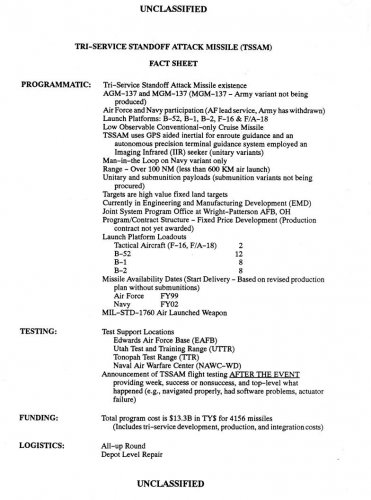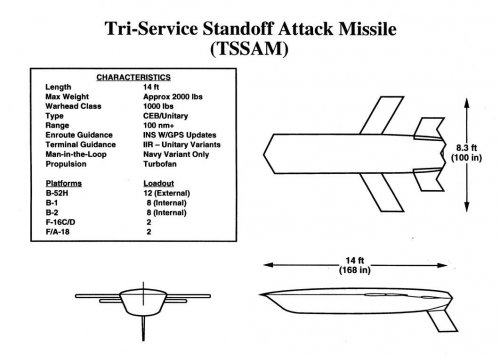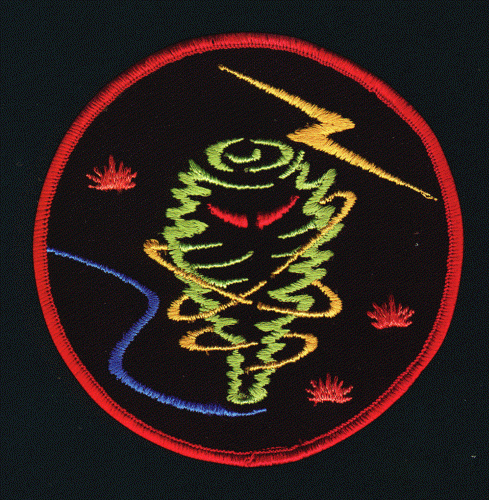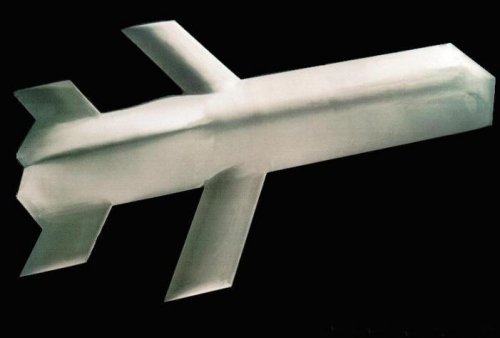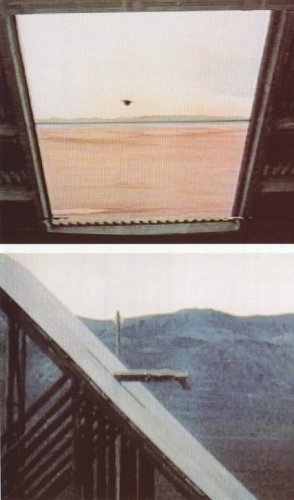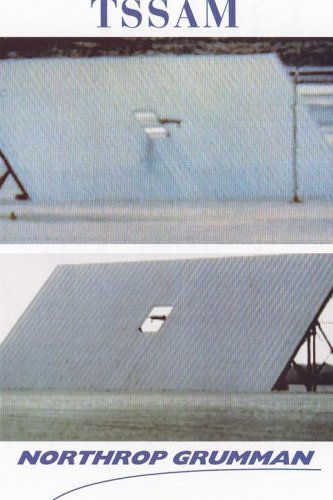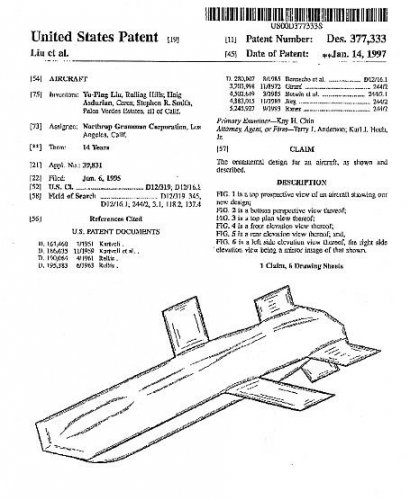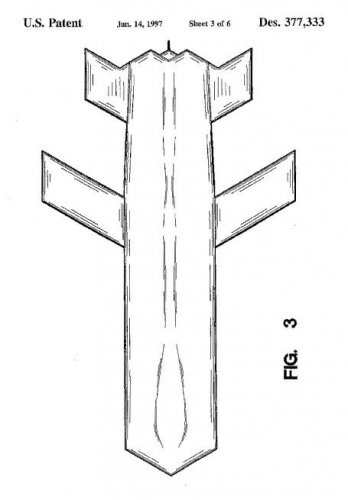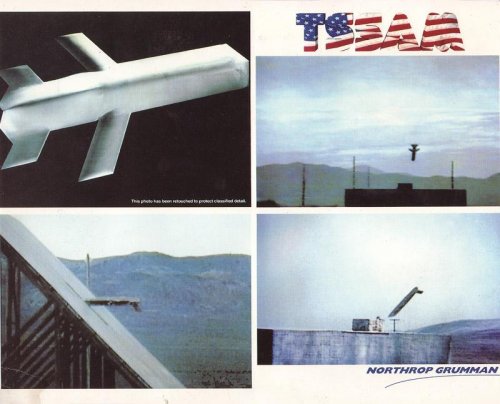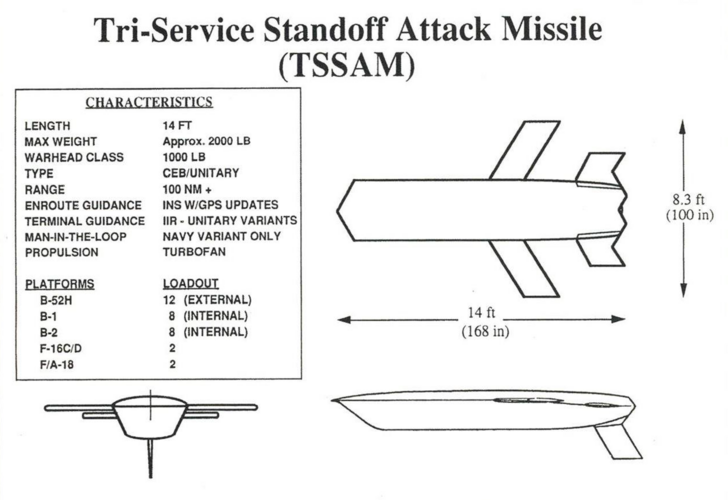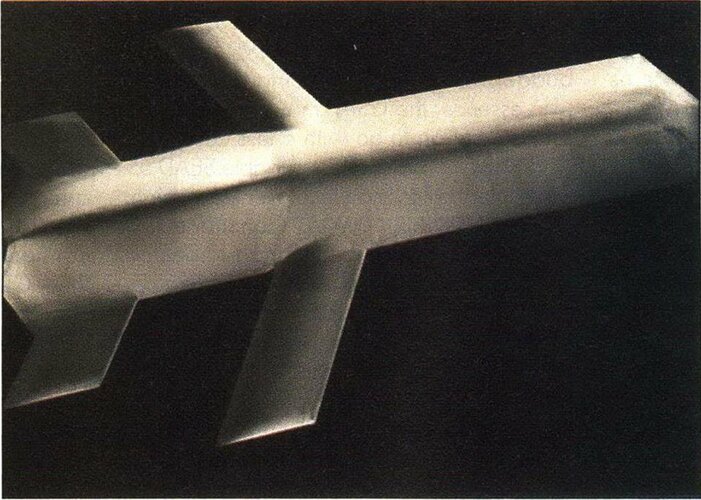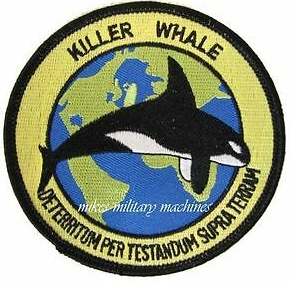You are using an out of date browser. It may not display this or other websites correctly.
You should upgrade or use an alternative browser.
You should upgrade or use an alternative browser.
Northrop AGM-137 Tri-Service Standoff Attack Missile (TSSAM)
- Thread starter sferrin
- Start date
- Joined
- 25 June 2009
- Messages
- 14,138
- Reaction score
- 4,329
I have only one picture of the TSSAM in model form, and also the patch that reportedly was used by people working on the program, depicting the Warner Bros.'s tasmanian devil character (TSSAM/TASManian being a bit far-fetched, but...). Please don't get mixed up on the acronym, folks! (it means Tri-Service Standoff Attack Missile).
Attachments
- Joined
- 1 April 2006
- Messages
- 11,052
- Reaction score
- 8,500
...thanks to quellishStargazer2006 said:I have only one picture of the TSSAM in model form
- Joined
- 3 June 2011
- Messages
- 17,896
- Reaction score
- 10,977
Nico said:The only picture I remember is tha heavily retouched one, depicting the an 1:1 mock-up, the same appearing on Andreas' site on Military Des
Nico
Yeah, that's the one I was referring to as "heavily doctored" in the first post. I'm looking for the one of it flying into a bunker opening. It was in AvWeek back in the day.
- Joined
- 12 May 2008
- Messages
- 226
- Reaction score
- 444
- Joined
- 6 August 2007
- Messages
- 3,368
- Reaction score
- 3,539
BillRo said:Found some handouts that were produced for the N-G merge; they included the fact sheet, 3 - View, and the retouched photo but it also has your pix.
Thanks Bill! I've been looking for these for an eternity!
- Joined
- 1 April 2006
- Messages
- 11,052
- Reaction score
- 8,500
I think many will join me in question if you can share these too. Anyway, thanks again!!BillRo said:Found some handouts that were produced for the N-G merge; they included the fact sheet, 3 - View
- Joined
- 8 January 2006
- Messages
- 1,605
- Reaction score
- 730
For a reasonable approximation of what was doctored out, turn a Tacit Blue upside down and compare them. Actually, that model shows the air-launched TSSAM, the ground-launched BGM-137B had its differences.
I should know, I worked on the program from early 1989 to its cancellation. Before it was cancelled, there was an design effort under way for a derivative of the air-launched version for Britain's stand-off requirement.
I should know, I worked on the program from early 1989 to its cancellation. Before it was cancelled, there was an design effort under way for a derivative of the air-launched version for Britain's stand-off requirement.
- Joined
- 12 May 2008
- Messages
- 226
- Reaction score
- 444
- Joined
- 25 June 2009
- Messages
- 14,138
- Reaction score
- 4,329
Thanks BillRo!
I'm not very much in the know of all the patenting process and its various stages, so forgive my asking what may sound like a dumb question, but isn't a Registered Patent automatically something freely accessible to the public once it's been granted? If so, why did no-one have access to such patents as these before?
I'm not very much in the know of all the patenting process and its various stages, so forgive my asking what may sound like a dumb question, but isn't a Registered Patent automatically something freely accessible to the public once it's been granted? If so, why did no-one have access to such patents as these before?
Steve Pace
Aviation History Writer
- Joined
- 6 January 2013
- Messages
- 2,266
- Reaction score
- 212
Shades of Tacit Blue (Whale)... -SP
- Joined
- 25 June 2009
- Messages
- 14,138
- Reaction score
- 4,329
Steve Pace said:Shades of Tacit Blue (Whale)... -SP
XCIIGT
I really should change my personal text
- Joined
- 13 February 2015
- Messages
- 2
- Reaction score
- 2
I worked on this project. I have the patch, spec sheet and a drawing of the Tasmanian Devil riding the missile which I drew. It was a unreal day sitting the the board room watching the Live news release. When I locate the items I will post photos of them.
- Joined
- 25 June 2009
- Messages
- 14,138
- Reaction score
- 4,329
XCIIGT said:I worked on this project. I have the patch, spec sheet and a drawing of the Tasmanian Devil riding the missile which I drew. It was a unreal day sitting the the board room watching the Live news release. When I locate the items I will post photos of them.
Welcome aboard XCIIGT and thanks for the offer. I certainly look forward to seeing all this stuff!
- Joined
- 27 December 2005
- Messages
- 16,924
- Reaction score
- 21,791
Attachments
-
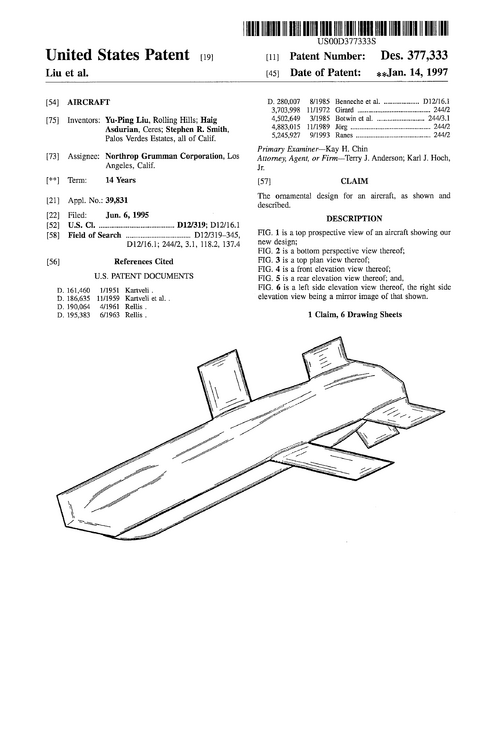 USD377333 - 0001.png104.2 KB · Views: 236
USD377333 - 0001.png104.2 KB · Views: 236 -
 USD377333 - 0002.png54.8 KB · Views: 181
USD377333 - 0002.png54.8 KB · Views: 181 -
 USD377333 - 0003.png51.3 KB · Views: 169
USD377333 - 0003.png51.3 KB · Views: 169 -
 USD377333 - 0004.png49.8 KB · Views: 158
USD377333 - 0004.png49.8 KB · Views: 158 -
 USD377333 - 0005.png34.2 KB · Views: 153
USD377333 - 0005.png34.2 KB · Views: 153 -
 USD377333 - 0006.png37.5 KB · Views: 159
USD377333 - 0006.png37.5 KB · Views: 159 -
 USD377333 - 0007.png33 KB · Views: 185
USD377333 - 0007.png33 KB · Views: 185 -
USD377333.pdf162.8 KB · Views: 15
- Joined
- 27 December 2005
- Messages
- 16,924
- Reaction score
- 21,791
STEALTHY TSSAM ACES TESTS BUT FACES BUDGET BATTLE
DAVID A. FULGHUM/WASHINGTON
As Congress nears its final I995 defense budget decisions, US. Air Force officials have unveiled Northrop's AGM—I37 Tri-Service Standoff Attack Missile
and the precise strike results of two August tests of the stealthy, long-range, $1 7-2.3-million weapon. The budget-threatened TSSAM already has been flown to its full, classified range of slightly over I80 mi. and hit the center of targets 9 ft. wide or less—in one case an air conditioner on top of a building - as part of tests captured on film and newly declassified.
Currently, the $13.3-billion program is scheduled to produce 4,156 of the one-ton, 14-ft.-long, subsonic missiles for the Air Force (3,631) and Navy (525). A ground-launched version for the Army was canceled.
A submunition—carrying ”truck" version of TSSAM will continue through engineering manufacturing and development (EMD). But to keep the price of the program down, this version, which is about 80% common with the unitary warhead TSSAM, will not go into production.
IN WARTIME, TSSAM’s role would be to strike the most well-protected targets such as steel and concrete-hardened air defense sites, command and control complexes and key communication centers in the first two or three days of a conflict. Its high maneuverability and low radar cross section would allow it to strike with minimum warning while keeping allied air crews at a safe distance from enemy antiaircraft missiles and interceptor aircraft. TSSAM’s stealthy design also makes it difficult for air defense weapons to lock on and hit the missile.
The missile’s 8.3-ft. wingspan and wide, airfoil body allows it extreme maneuverability for avoiding obstacles, taking evasive action and conducting high- and low level popup attacks. TSSAM uses Global Positioning System-aided inertial navigation for en route guidance and imaging infrared seeker for its final precision attack.
The TSSAM’s long range would allow it to be employed by the B-52 (which can carry 12 missiles externally) and B-1 (eight internal), which cannot penetrate air defenses as well as the B-2 (eight internal) stealth bomber. The cruise missile, which already had been launched from an A-6 and B-52, also was tested Aug. 5 from the Navy's F/A-I 8 (two external) and Aug. 13 from the Air Force’s F-15 (two external) in an impressive show of versatility.
Once programmed, the (Air Force fire and-forget or Navy man-in—the-loop) TSSAM can ”fly a rigorous, preplanned mission profile and precisely attack a fixed land target” with a 1000—lb.—class warhead, according to USAF Brig. Gen. Richard H. Roellig, the program manager.
The TSSAM program is in EMD—obout halfway through the development test program— with the production contract yet to be awarded, Roellig said. Under the current revised production plan, the missile is first to be delivered to the Air Force in Fiscal I999 and the Navy in Fiscal 2002. Production rates are expected to range from 25-500 missiles per year. Program officials plan to make a long-lead production decision by January, 1996, and finish the flight test program in 1997. There is question about whether the recent spectacular test results have come soon enough to affect the ultimate fate of the oft-delayed program. A failed aluminum casing process caused TSSAM to be redesigned as a combination composite/cast aluminum missile early in 1988-89. Later delays were attributed to testing and quality control problems that produced sporadic navigation, software and actuator failures.
”WE’VE EXPERIENCED about a 70% [test flight] success rate to date," Roellig said. ”The rate is right about where all the other cruise missile programs were at this phase in their program. ”The contractor has come a long way, ” he said. ”Under the restructured schedule, Northrop is not delinquent.” Recently, Deputy Defense Secretary John Deutch asked the services to consider abandoning TSSAM and/or adding $100 million to other near-term, highly accurate weapon programs. While top Air Force leadership still voices support for TSSAM, some senior officials at the operational level say they have lost confidence in the missile.
”We believe that it is time to cancel TSSAM," an Air Force official said. ”It is of questionable reliability and unconscionable cost. We're at the point that even if we bought the thing we couldn’t afford to buy many.”
The Air Force is actively considering at least two alternatives to TSSAM. There are plans to make more conventional use of AGM—86 Air-Launched Cruise Missiles (ALCMs), including development of bigger, more effective warheads. The ALCMs are favored because they are already paid for and many have been made surplus by the disappearing nuclear attack role. The current conventional ALCM, or CALCM, was used against targets in northern Iraq
in the opening hours of Desert Storm. The government of Turkey had not yet granted permission for bombing strikes to be launched from that country, so B-52s fired conventionally armed ALCMs from Saudi Arabian airspace into areas of Iraq that allied aircraft could not reach because of range limitations. ”The interim [standoff] capability would be CALCM [AGM-86C], more Have Naps [AGM-142] and more AGM-130s” the Air Force official said. ”[Also] we plan to look at a future standoff precision capability—— son of TSSAM—to address the requirements that TSSAM was trying to meet.”
The new weapon would have a range over100 mi., but its requirements would be based on better knowledge of the threat and the U.S.’ changing role in the world, the official said. The Navy plans to supplement TSSAM with the SLAM ER (AW&ST Mar. 21, p. 53). Meanwhile, Deutch’s suggestion that precision weapon programs be funded by an additional $100 million would fit well into Air Combat Command’s wishes.
The Joint Direct Attack Munition (JDAM), a guidance kit for unpowered conventional bombs, was slipped from I999 to 2001 because of budget
cuts. Subsequently, the command has been trying to ”buy back JDAM to its original schedule," an Air Combat Command official said. ”I think
the $100 million would do that.’
Some Pentagon officials also see using the cancellation of TSSAM as a bargaining chip to retain funding for the F-22 fighter, which also has been threatened by Deutch’s memorandum on canceling and restructuring major defense programs. However, there is the consideration that both F22 and TSSAM are to be built in Georgia, the home state of Senate Armed Services Committee Chairman Sam Nunn.
”I think the people who want to play TSSAM off against F-22 really sell Sen. Nunn short,” a defense official said. "He's a lot more astute than [to be trapped in] that [choice].”
Attachments
Critical_NOX
ACCESS: Restricted
- Joined
- 16 August 2022
- Messages
- 4
- Reaction score
- 10
I actually mounted the inside view camera for the test. The image must a have been scraped from the video. I put it up last minute for fun, no test card requirement, awesome to watch the last second adjustment to clear both sides of the "Window". This was a very fun project but many engineering issues led to its demise. Not many picture of this beast because I spent 3 weeks shredding everything once it cancelled.Found some handouts that were produced for the N-G merge; they included the fact sheet, 3 - View, and the retouched photo but it also has your pix.
Worked TSSAM as well, B-2/TSSAM integration at EAFB. I agree, lots of engineering issues but when it worked, very impressive!I actually mounted the inside view camera for the test. The image must a have been scraped from the video. I put it up last minute for fun, no test card requirement, awesome to watch the last second adjustment to clear both sides of the "Window". This was a very fun project but many engineering issues led to its demise. Not many picture of this beast because I spent 3 weeks shredding everything once it cancelled.Found some handouts that were produced for the N-G merge; they included the fact sheet, 3 - View, and the retouched photo but it also has your pix.
I agree, lots of engineering issues but when it worked, very impressive!
Could those engineering issues have been worked out?
What exactly were the issues?
Critical_NOX
ACCESS: Restricted
- Joined
- 16 August 2022
- Messages
- 4
- Reaction score
- 10
S
Engineering and technology was solid as well as LOW capabilities. Mostly issues were due to trying to make this a multi-service, multi munition platform. How many systems launch from both a MLRS and aircraft platform. Most of the issues revolved around this multi launch platform and Multi munition requirements. When it worked, it was stellar, flying through a window from 100 miles away was impressive. The cost overruns doomed the system, not the engineeringI agree, lots of engineering issues but when it worked, very impressive!
Could those engineering issues have been worked out?
What exactly were the issues?
You are correct on the design and engineering, very solid, I mis-spoke. Early on, there were manufacturing and assembly issues (I saw those first hand which contributed to some of the flight test failures). I remember when the missile started working consistently with many more successful flight tests, then cancelled, it was a shame, was an outstanding platform.S
Engineering and technology was solid as well as LOW capabilities. Mostly issues were due to trying to make this a multi-service, multi munition platform. How many systems launch from both a MLRS and aircraft platform. Most of the issues revolved around this multi launch platform and Multi munition requirements. When it worked, it was stellar, flying through a window from 100 miles away was impressive. The cost overruns doomed the system, not the engineering.I agree, lots of engineering issues but when it worked, very impressive!
Could those engineering issues have been worked out?
What exactly were the issues?
Critical_NOX
ACCESS: Restricted
- Joined
- 16 August 2022
- Messages
- 4
- Reaction score
- 10
It was interesting to be involved with testing the development of LOW observables, Tacit Blue and TSSAM, both Northrup designs that shared similar engineering, TSSAM evolving from shared LOW properties
Testing at AFFTC Det 3 Patch
Testing at AFFTC Det 3 Patch
Attachments
Last edited by a moderator:
Did you guys ever get to check out the display room in the 3-60 building? It had 2 full scale mockups of the air launched and ground launched versions, as well as a bunch of cool models of different aircraft that would carry it. I remember going to Seattle (actually Kent, WA) to Boeing's facility since they made the faux MLRS launcher for the Army version. Since the rear aspect LO requirements for that version was changed, essentially being a loitering missile dropping submunitions, the back end was redesigned, and it was having issues fitting properly in the launcher. Definitely was a fun program to work on, loading everything into that old Convair 580 and sending it off to the test site. From what I understand, there is a surviving example of the TSSAM (not sure which version) sitting out at Dugway.You are correct on the design and engineering, very solid, I mis-spoke. Early on, there were manufacturing and assembly issues (I saw those first hand which contributed to some of the flight test failures). I remember when the missile started working consistently with many more successful flight tests, then cancelled, it was a shame, was an outstanding platform.
Last edited by a moderator:
Critical_NOX
ACCESS: Restricted
- Joined
- 16 August 2022
- Messages
- 4
- Reaction score
- 10
Funny, I remember unloading the Convair 580 at the site. To get the coffin out you had to pull it halfway out with a forklift then let it teeter while you got a better purchase in the middle...little nerve racking. I didn't think TSSAM ever flew at dugway, is it on a display stand?
I don't think it ever flew at Dugway either, someone told me there was one sitting in a storage area out in the open there for a while, maybe it was a mockup, or an RCS test article.Funny, I remember unloading the Convair 580 at the site. To get the coffin out you had to pull it halfway out with a forklift then let it teeter while you got a better purchase in the middle...little nerve racking. I didn't think TSSAM ever flew at dugway, is it on a display stand?
- Joined
- 11 February 2010
- Messages
- 1,546
- Reaction score
- 2,324
How does TASSM wing folds for internal stowage ? Does it fold forward or somehow backward ? Or maybe the wing have 3 sections which allows it to fold the same manner as a satellite solar panel.
Bruno Anthony
I miss the Cold War
- Joined
- 5 August 2012
- Messages
- 627
- Reaction score
- 600
How does it compare to JASSM?Worked TSSAM as well, B-2/TSSAM integration at EAFB. I agree, lots of engineering issues but when it worked, very impressive!I actually mounted the inside view camera for the test. The image must a have been scraped from the video. I put it up last minute for fun, no test card requirement, awesome to watch the last second adjustment to clear both sides of the "Window". This was a very fun project but many engineering issues led to its demise. Not many picture of this beast because I spent 3 weeks shredding everything once it cancelled.Found some handouts that were produced for the N-G merge; they included the fact sheet, 3 - View, and the retouched photo but it also has your pix.
- Joined
- 1 April 2006
- Messages
- 11,052
- Reaction score
- 8,500
from "Carriage and Separation Wind Tunnel Testing: A Vital Part of Air-Launched Weapons Development Programs"
by Duane Cline
...
TSSAM Carriage and Separation WT Test Program: The AGM-137 Tri-Service Stand-Off Attack Missile (TSSAM) was a stealth cruise missile developed by Northrop Corporation at their facilities in Hawthorne, CA beginning in 1984. The large size of the air-launched variants of the TSSAM required that the wings and tail surfaces be stowed during carriage and launch, unfolding after the missile was clear of the carrier aircraft. Unfortunately, the TSSAM fuselage shape made the vehicle aerodynamically unstable with the wings and tails stowed. Northrop conducted initial store carriage and separations tests on the B-52 and F/A-18 during the initial full-scale development (IFSD) program prior to award of the full-scale development (FSD) contract in 1986.
The complexity of integrating the TSSAM on multiple different aircraft became apparent early in FSD. The original carriage and separation wind tunnel test plan called for a limited number of tests on each of the six intended carrier aircraft (about 15 tests total) over the course of 2 years. During extensive meetings with the Air Force, Navy and the various aircraft contractors Northrop learned that each group had their own definition of safe store separation and that TSSAM must meet them all with a common configuration. While developing the detailed wind tunnel test plans, the number of test configurations for each aircraft grew to account for more mission loadouts and more detailed flowfield mapping requirements– resulting in longer test durations. Tests that were originally proposed to last about 100 hours in the wind tunnel grew to 300 hours or more and a single separation flowfield wind tunnel test could last up to 6 weeks.
The results of the first round of separation wind tunnel tests drove changes to the aerodynamics of the TSSAM in the stowed configuration to ensure safe and reliable separation from all the carrier aircraft. These configuration changes were significant enough to require several more rounds of wind tunnel tests of longer duration to achieve the desired launch characteristics for each carrier aircraft. We also learned that certain aircraft required testing of a wider array of aircraft configurations to fully model operational characteristics, further increasing test durations. During this period there could be 2-3 TSSAM wind tunnel tests being conducted concurrently in facilities spread across the country, posing many management and staffing challenges. By the time the TSSAM program was cancelled in 1994, more than 50 carriage and separation wind tunnel tests had been conducted.
The lessons learned on the TSSAM program informed significant improvements in the store certification process that have occurred over the past 30 years. The advances in computer computational fluid dynamics (CFD) technologies now allow detailed modeling of the flowfield around complex external store configurations. In-depth analysis of the correlation between analytical models, wind tunnel and flight test data have allowed modern store certification efforts to be conducted far more efficiently than was possible during the TSSAM program. The role of separation wind tunnel testing changed from the primary data gathering method into a valuable tool for validating CFD modeling results, significantly reducing the scope of the store certification test effort and the associated costs. Wind tunnel tests that once consisted of thousands of runs and lasted 4 to 6 weeks now consist of several hundred runs and can be completed in about 2 weeks. Similar savings in flight tests costs have also been possible as fewer test points are required to validate analytical results. The ability to model critical flight conditions has greatly improved the safety and cost of modern store certification flight test programs.

by Duane Cline
...
TSSAM Carriage and Separation WT Test Program: The AGM-137 Tri-Service Stand-Off Attack Missile (TSSAM) was a stealth cruise missile developed by Northrop Corporation at their facilities in Hawthorne, CA beginning in 1984. The large size of the air-launched variants of the TSSAM required that the wings and tail surfaces be stowed during carriage and launch, unfolding after the missile was clear of the carrier aircraft. Unfortunately, the TSSAM fuselage shape made the vehicle aerodynamically unstable with the wings and tails stowed. Northrop conducted initial store carriage and separations tests on the B-52 and F/A-18 during the initial full-scale development (IFSD) program prior to award of the full-scale development (FSD) contract in 1986.
The complexity of integrating the TSSAM on multiple different aircraft became apparent early in FSD. The original carriage and separation wind tunnel test plan called for a limited number of tests on each of the six intended carrier aircraft (about 15 tests total) over the course of 2 years. During extensive meetings with the Air Force, Navy and the various aircraft contractors Northrop learned that each group had their own definition of safe store separation and that TSSAM must meet them all with a common configuration. While developing the detailed wind tunnel test plans, the number of test configurations for each aircraft grew to account for more mission loadouts and more detailed flowfield mapping requirements– resulting in longer test durations. Tests that were originally proposed to last about 100 hours in the wind tunnel grew to 300 hours or more and a single separation flowfield wind tunnel test could last up to 6 weeks.
The results of the first round of separation wind tunnel tests drove changes to the aerodynamics of the TSSAM in the stowed configuration to ensure safe and reliable separation from all the carrier aircraft. These configuration changes were significant enough to require several more rounds of wind tunnel tests of longer duration to achieve the desired launch characteristics for each carrier aircraft. We also learned that certain aircraft required testing of a wider array of aircraft configurations to fully model operational characteristics, further increasing test durations. During this period there could be 2-3 TSSAM wind tunnel tests being conducted concurrently in facilities spread across the country, posing many management and staffing challenges. By the time the TSSAM program was cancelled in 1994, more than 50 carriage and separation wind tunnel tests had been conducted.
The lessons learned on the TSSAM program informed significant improvements in the store certification process that have occurred over the past 30 years. The advances in computer computational fluid dynamics (CFD) technologies now allow detailed modeling of the flowfield around complex external store configurations. In-depth analysis of the correlation between analytical models, wind tunnel and flight test data have allowed modern store certification efforts to be conducted far more efficiently than was possible during the TSSAM program. The role of separation wind tunnel testing changed from the primary data gathering method into a valuable tool for validating CFD modeling results, significantly reducing the scope of the store certification test effort and the associated costs. Wind tunnel tests that once consisted of thousands of runs and lasted 4 to 6 weeks now consist of several hundred runs and can be completed in about 2 weeks. Similar savings in flight tests costs have also been possible as fewer test points are required to validate analytical results. The ability to model critical flight conditions has greatly improved the safety and cost of modern store certification flight test programs.

The E-Supercruiser: September 2021
Having trouble viewing this email? Click here. Editor's Notes James Keniston It's delightful to be able to bring the newsletter to you all knowing that we have returned to in-person events with our Sa
campaignlp.constantcontact.com
- Joined
- 1 April 2006
- Messages
- 11,052
- Reaction score
- 8,500
From 'Lessons Learned' by Leland M. Nicolai
"The Northrop engineers forgot they were building a bomb and designed a very sophisticated and elegant airframe and subsystems, leading to technical problems during development and flight testing. Each launch aircraft required a unique set of strakes affixed to the missile aft body for safe separation during the unpowered launch and all eight had to be packaged in the AGM-137 all-up round container."
That's explains those additional inverted L-shaped surfaces on F/A-18 launch video.
"The Northrop engineers forgot they were building a bomb and designed a very sophisticated and elegant airframe and subsystems, leading to technical problems during development and flight testing. Each launch aircraft required a unique set of strakes affixed to the missile aft body for safe separation during the unpowered launch and all eight had to be packaged in the AGM-137 all-up round container."
That's explains those additional inverted L-shaped surfaces on F/A-18 launch video.
Last edited:
The Northrop engineers forgot they were building a bomb and designed a very
sophisticated and elegant airframe and subsystems
So the Northrop engineers got carried away with the technical challenges of designing, testing and developing the AGM-137?
I remembered coming across an AIAA paper that mentioned that JASSM has a pitch-up tendency during early store separation tests.
The solution was adding 2 strakes at the tail end, which will help in preventing the pitch-up from taking place, and threw them away once JASSM has safely separated from the aircraft.
The solution was adding 2 strakes at the tail end, which will help in preventing the pitch-up from taking place, and threw them away once JASSM has safely separated from the aircraft.
Similar threads
-
-
AGM-129 Advanced Cruise Missile: Stagger Around #3
- Started by Orionblamblam
- Replies: 5
-
-
-
ARPV Advanced RPV Program (1975 -1977)
- Started by Stargazer
- Replies: 4

